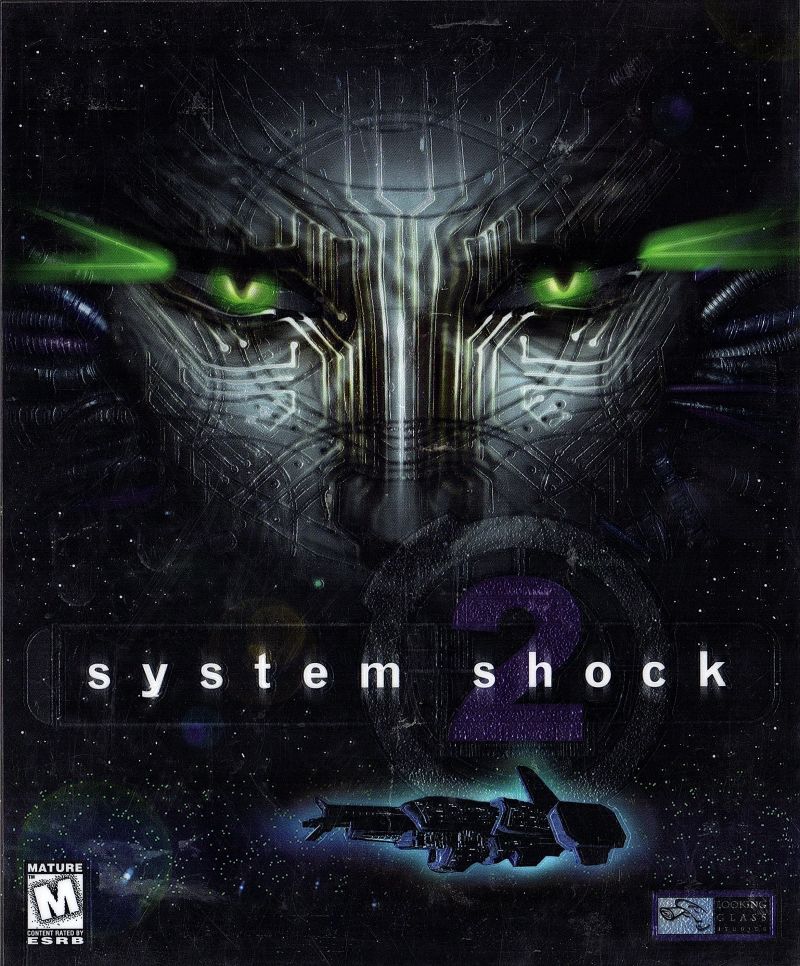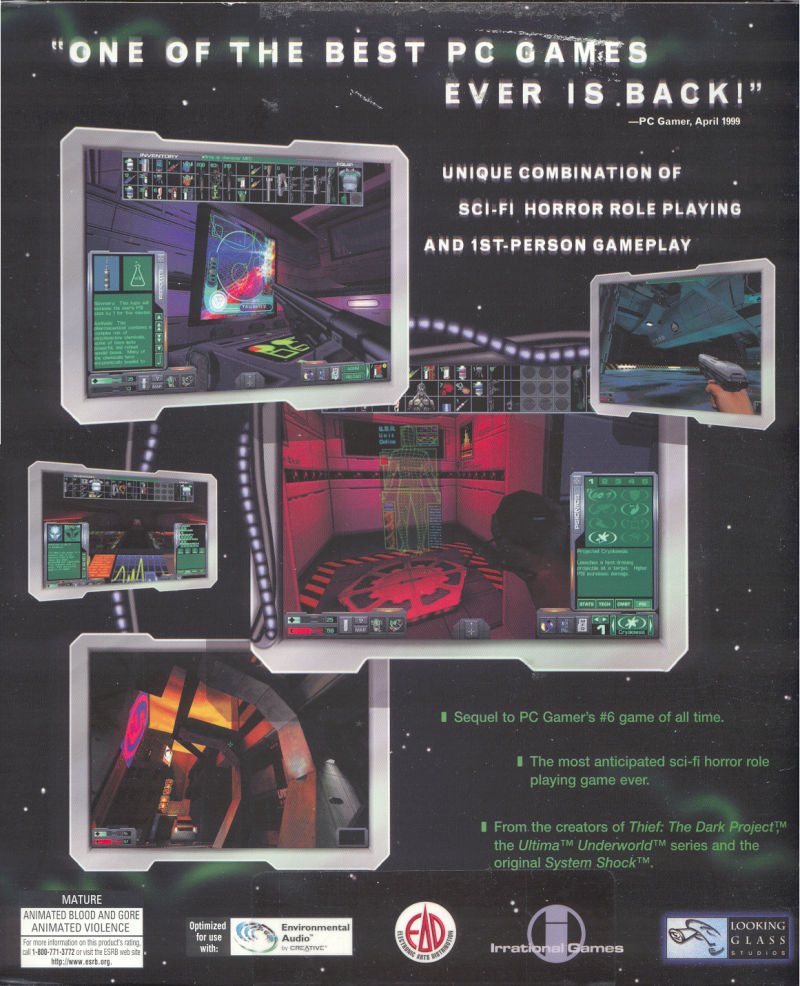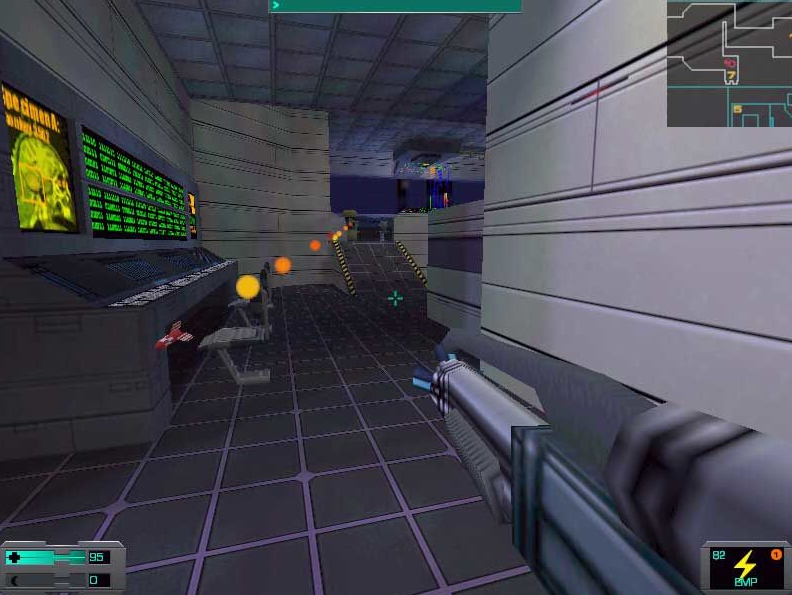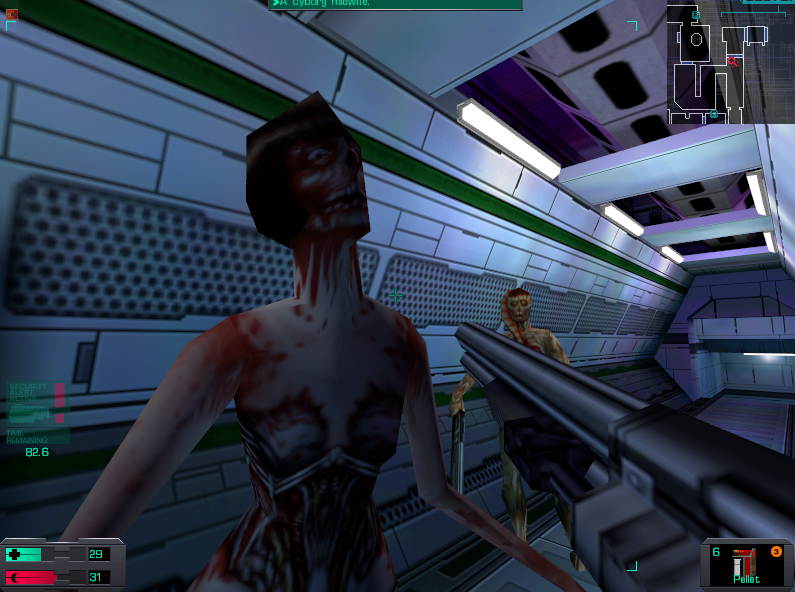In the year 2114, forty-two years after the events described in System Shock, a soldier joins the military organization Unified National Nominate (UNN), receiving the number G65434-2, and is shortly thereafter assigned to the military space ship Rickenbacker. This ship’s duty is to escort the Von Braun, an experimental faster-than-light starship, on its maiden voyage. However, the next thing the soldier can remember is waking up in a cryo-tube on the Von Braun. It appears that both ships were infected with something so horrifying that nearly the entire crew was either killed or mutated into monsters. The soldier is contacted by a woman who identifies herself as the only human survivor. His first task is a rendezvous with this woman, for which he will have to traverse the monster-infested corridors of the ghost ship.
System Shock 2 is a hybrid of first-person shooter and role-playing game. In the beginning of the game the player chooses a career for the protagonist in the UNN. This choice grants bonuses to the protagonist’s initial skills. Marines specialize in combat, navy officers can repair weapons and hack computer terminals, and OSA agents may begin the game with psionic powers. Notwithstanding this initial choice, the player may choose to learn any of these skills as the game progresses, spending acquired cybermodules to develop the main character in a RPG fashion.
As the hero traverses the corridors of Von Braun, he will have to avoid death at the hands of hostile creatures and robots on the way, acquire a variety of items, and complete missions to unlock new areas and advance the story. The game emphasizes survival rather than elimination of enemies; in many situations the protagonist is underpowered, and new enemies may appear in already explored areas.
Combat is done in FPS style, with both ranged and melee weapons. The ranged weapons can accept a few different types of ammo, each of them efficient against different foes, and can shoot in two firing modes. However, ranged weapons deteriorate quickly as the player character uses them, and will eventually break down after prolonged use.
Healing items, such as medical hypos and medikits, will save the hero’s life, while other items will shield him from radiation, cure him from poisoning, or temporarily boost his attributes. The soldier can find armor to wear and implants which will amplify his skills, as long as their battery doesn’t run out. There are also some alien items that the player has to research (which usually requires finding specific chemicals in the ship’s chemical stores); researching weapons and items allows the player to use them, and researching enemies’ organs makes it possible to deal more damage to them.
Apart from finding them lying around, items can be bought from “matter replicators” for nanites, the game’s currency. Nanites are also used for cybernetic activities (hacking electronic systems), repairing broken weapons and improving them, healing the protagonist on surgery tables, and, after death, resurrecting him in special chambers found on most levels.
Cybermodules are received for successfully completing objectives or found during exploration. They are used to enhance the main character’s attributes: the player can improve his strength, agility, endurance, as well as his cybernetics and weapon skills; psionic powers are also acquired in this way. Psi powers allow the protagonist to move objects from a distance, paralyze enemies, become invisible, etc. A special “psi amplifier” must be found in order to use them, and the hero spends “psi points” each time he uses a psi power.
Like in the first System Shock, much of the background story in the game is revealed by finding messages left by crew members before they fell victims to the mysterious infestation.
Cover Art:
Screenshots:





